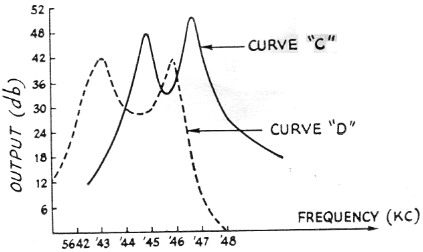
The requirement for better matching to the end impedances is one of the main motivations for using composite filters. These reflections result in the filter response deviating quite sharply from the theoretical, especially near the cut-off frequency. This mismatch leads to multiple reflections at the filter terminations and at the junctions between sections. They will usually be terminated with fixed resistances that the filter cannot match perfectly except at one specific frequency. This is easy enough to do with the internal sections of a multiple section filter, because it is only necessary to ensure that the sections facing the one in question have identical image impedances. The image method, therefore, relies on each filter section being terminated with the correct image impedance. This can be shown to be equivalent to the performance of a section terminated in its image impedances. The image analysis starts with a calculation of the input and output impedances (the image impedances) and the transfer function of a section in an infinite chain of identical sections. Zobel also published composite designs incorporating both constant k and m-derived sections. In 1920 he invented the m-derived filter.

George Campbell worked on filtering from 1910 onwards and invented the constant k filter.He also pioneered the use of operational calculus (what has now become Laplace transforms in its more formal mathematical guise) to analyse these signals. It was the need to recover these signals that gave rise to the need for advanced filtering techniques. He invented single sideband modulation for the purpose of multiplexing telephone channels. John Carson provided the mathematical underpinning to the theory.The researchers involved in this work and their contributions are briefly listed below The image method of designing filters originated at AT&T, who were interested in developing filtering that could be used with the multiplexing of many telephone channels on to a single cable. Image filters are linear filters and are invariably also passive in implementation. The most frequent parameters considered are stopband rejection, steepness of the filter skirt ( transition band) and impedance matching to the filter terminations. However, it is more usual to use a composite filter of two or three different types of section to improve different parameters best addressed by a particular type.

In its simplest form, the filter can consist entirely of identical sections. The basic sections are arranged into a ladder network of several sections, the number of sections required is mostly determined by the amount of stopband rejection required.

An important parameter of image filters is their image impedance, the impedance of an infinite chain of identical sections. Filters designed by this method are called image parameter filters, or just image filters. In this, the analysis parallels transmission line theory on which it is based.

The image method of filter design determines the properties of filter sections by calculating the properties they have in an infinite chain of such sections. A composite image filter is an electronic filter consisting of multiple image filter sections of two or more different types.


 0 kommentar(er)
0 kommentar(er)
